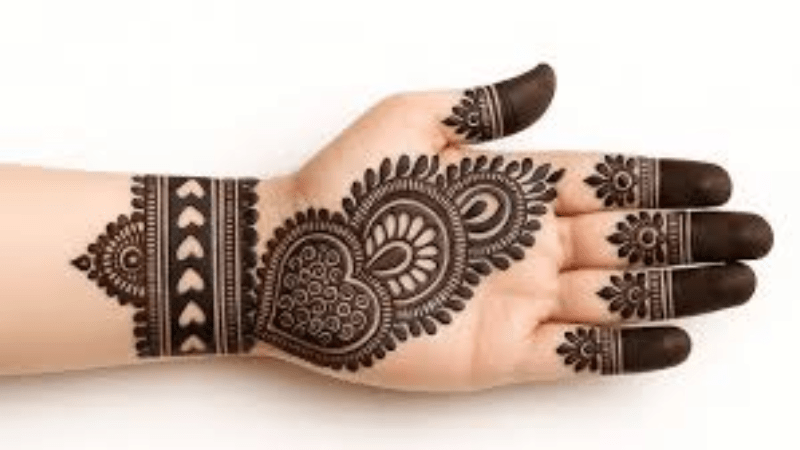Mehndi inspirations, also known as henna, is one of the most ancient and graceful forms of body art in the world. For centuries, it has been used as a symbol of beauty, joy, and celebration across many cultures—especially in South Asia, the Middle East, and Africa. The delicate scent, the deep stain, and the artistic expression of mehndi designs together create an experience that is both spiritual and aesthetic. Among all the styles and patterns, front hand mehndi designs hold a special place. They are the first thing people notice when you greet them, wave, or celebrate a moment of happiness.
This article explores the art, meaning, evolution, and inspiration behind front hand mehndi designs—from traditional patterns to modern creative styles that reflect today’s generation’s elegance and imagination.
Table of Contents
The Art of Beauty: Front Hand best Mehndi Inspirations on youtube
The Art of Beauty: Front Hand best Mehndi Inspirations on facebook
The Historical Essence of Mehndi
Mehndi’s history stretches back more than 5,000 years. It was used by ancient Egyptians to decorate their bodies and dye their hair and nails. In the Indian subcontinent, mehndi became a part of celebrations, especially weddings, symbolizing prosperity, fertility, and protection against evil. Brides would cover their hands and feet in intricate patterns, believing that the deeper the color, the stronger the love between husband and wife.
The front hand, being the visible and expressive part of the body, became a canvas of creativity. From palm to fingertips, women began creating motifs of flowers, vines, peacocks, and geometric shapes, each carrying its own meaning. The art evolved from cultural expression into a symbol of beauty, identity, and heritage.

Symbolism and Meaning Behind Designs
Each mehndi pattern tells a story, not just through its shape but through its placement and symbolism. Here are a few traditional motifs often used on the front hand:
- Floral Patterns: Represent beauty, happiness, and natural grace.
- Paisleys (Kairi Design): A symbol of fertility and good luck.
- Peacocks: Represent elegance, love, and pride.
- Mandala Circles: Signify eternity and completeness.
- Vines and Leaves: Indicate devotion, growth, and connection.
- Dots and Lines: Add rhythm and flow, balancing bold and fine details.
When these elements combine, they create a language of art that transcends words—each swirl, petal, and curve whispering a story of culture and joy.
Evolution of Front Hand Mehndi Designs
Over the years, mehndi art has transformed through different eras and styles. Traditionally, designs were dense and symmetrical, covering the entire hand. Modern designs, however, embrace minimalism and elegance, focusing on clean spaces and bold lines. Let’s explore a few major styles that inspire today’s front hand mehndi trends:
1. Traditional Indian Mehndi
This is the most detailed form, covering the entire front hand with motifs like peacocks, bride-groom figures, mandalas, and temple shapes. The designs often reach up to the elbow or even beyond, making them ideal for bridal wear.

2. Arabic Mehndi
Known for bold outlines and flowing patterns, Arabic mehndi uses flowers and leaves connected by trails and vines. It leaves empty spaces for contrast, making the design appear elegant and easy to apply. This style is ideal for both casual and festive occasions.
3. Indo-Arabic Fusion
A blend of Indian detail and Arabic boldness, Indo-Arabic designs mix dense inner patterns with open outer trails. They’re graceful yet striking, and perfect for engagement or Eid events.
4. Moroccan and Geometric Styles
Inspired by North African art, these designs feature diamonds, triangles, and zigzags arranged symmetrically. Their clean lines and modern appeal make them suitable for those who prefer contemporary fashion.

5. Minimalist Mehndi
The modern era introduced simplicity. Minimalist designs focus on tiny motifs, finger detailing, and bracelet patterns. They’re easy to wear daily and perfect for school or college girls who want beauty with subtlety.
Front Hand as a Canvas of Emotion
The front hand is more than a part of the body—it’s a form of expression. Whether you’re greeting someone, holding flowers, or performing traditional gestures, your hands express joy and emotion. That’s why mehndi on the front hand is special. It highlights:
- Personality – Bold designs show confidence, while soft floral ones reveal gentleness.
- Mood – Dense patterns for festive vibes; light ones for elegance.
- Tradition – It connects generations, from grandmother’s simple gol-tikki to granddaughter’s modern geometric lines.
Each front hand mehndi pattern mirrors the artist’s mood and the wearer’s personality.
Inspirations for Every Occasion
Different events call for different designs. Here are some inspirations for each occasion:
1. Bridal Front Hand Designs
Brides often choose intricate, full-hand designs with motifs like peacocks, doli (palanquin), names of the couple, and mandalas. These designs not only beautify the hands but also tell the bride’s story through patterns. Some brides even include hidden initials of their groom—a fun tradition in South Asian weddings.
2. Eid Mehndi Designs
For Eid, Arabic or Indo-Arabic designs are most popular. A mix of floral vines and fingertip detailing creates a festive yet sophisticated look. The palm can feature a circular mandala with leafy trails extending toward the wrist.
3. Engagement or Party Designs
Here, girls prefer semi-full designs—floral bracelets, wrist bands, or ring-style mehndi. It’s modern and fashionable, especially for those who love wearing jewelry-inspired patterns.
4. Simple Daily Wear Mehndi
For school or casual outings, minimalist mehndi fits best. A small flower on the palm, dots along the fingers, or a vine crawling up the thumb looks elegant and easy to apply.
5. Modern Art-Inspired Mehndi
This includes creative elements like geometric shapes, dreamcatchers, feathers, and celestial symbols (moon, stars, and hearts). Such designs attract the younger generation who love uniqueness.
Tips for the Perfect Front Hand Mehndi
To make your mehndi look stunning and last longer, follow these simple tips:
- Exfoliate your skin before applying mehndi to remove oils and dirt.
- Apply lemon-sugar mixture once the mehndi starts drying; it darkens the stain.
- Avoid washing hands with water for at least 8–10 hours after application.
- Wrap or keep hands warm to deepen the color.
- Use natural henna instead of chemical cones for better results and fragrance.
- Moisturize regularly after the stain appears to make it last longer.
Your hands are your most expressive part—treat them as your personal art gallery!
The Spiritual and Emotional Side of Mehndi
Beyond its beauty, mehndi carries emotional and spiritual depth. It’s not merely decoration—it’s a form of blessing. When women gather to apply mehndi, they share laughter, stories, and joy. It becomes a ritual of connection and bonding.
In weddings, mehndi symbolizes love, purity, and new beginnings. In festivals like Eid and Diwali, it represents celebration and gratitude. When applied on the front hand, it’s a visual expression of happiness and devotion.
Even the process itself feels therapeutic. The coolness of henna on the skin relaxes the body, while the rhythmic flow of drawing patterns calms the mind. Mehndi is not just art—it’s mindfulness through tradition.
Front Hand Mehndi Trends of Today
In 2025, mehndi designs are more creative than ever. Artists now mix traditional motifs with modern flair, using glitter, white henna, and even colored accents. Here are some popular trends:
- Ring-chain style: Looks like jewelry drawn on the skin.
- Negative space mehndi: Uses blank areas creatively for modern appeal.
- Mandala and finger-tip combos: Perfect for influencers and bridesmaids.
- 3D shaded designs: Give a more realistic, embossed effect.
- Bridal name initials: A hidden touch of love in elegant patterns.
These trends show that mehndi continues to evolve—yet always stays rooted in its rich cultural essence.
Why Front Hand Mehndi Will Never Fade
Fashion changes, but mehndi remains eternal. No matter how modern the world becomes, the beauty of henna will continue to hold emotional and artistic importance. It’s not bound by religion, region, or age. A grandmother applying mehndi for Eid and a young girl creating her first design for school both share the same joy.
Front hand mehndi is more than just design—it’s a celebration of femininity, creativity, and culture. It connects generations, beautifies traditions, and transforms simple hands into living art.

Conclusion: The Art That Lives Through Time
“The Art of Beauty: Front Hand Mehndi Inspirations” reminds us that mehndi is not just decoration—it’s a language of beauty. Every dot, petal, and swirl carries centuries of heritage, emotion, and creativity. Whether you prefer a bold Arabic trail or a delicate minimalist vine, your mehndi reflects who you are—your style, your culture, and your grace.
From weddings to Eid, from casual gatherings to festivals, mehndi remains an inseparable part of our lives. It is art that lives, breathes, and shines through time—coloring not only our skin but also our hearts with happiness and beauty.
_______________________
YOU MAY ALSO LIKE:


